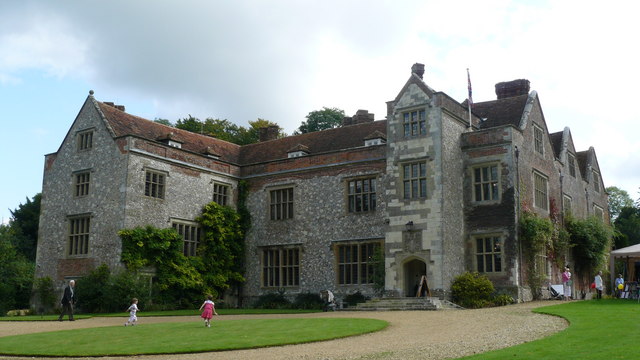by Lucy Cole
Last Tuesday I was fortunate enough to visit Chawton Manor House and its library with the school for the second time this academic year. We were all very excited to be able to repeat our amble around the stunning lawns and gardens and to re-examine the striking collection of paintings scattered around the Elizabethan house. However, our excitement was spurred by the fact that this time, we were being given the opportunity to actually handle and read the incredible selection of books that they hold in their small but significant collection.
 |
| http://upload.wikimedia.org/wikipedia/commons/9/9e/ Chawton_House_-_geograph.org.uk_-_1160151.jpg |
Last Tuesday I was fortunate enough to visit Chawton Manor House and its library with the school for the second time this academic year. We were all very excited to be able to repeat our amble around the stunning lawns and gardens and to re-examine the striking collection of paintings scattered around the Elizabethan house. However, our excitement was spurred by the fact that this time, we were being given the opportunity to actually handle and read the incredible selection of books that they hold in their small but significant collection.
Although the library appears to be your average room full of rare antique books it is, in fact, very unique. Chawton Manor is home to a rich assortment of women’s literature written between 1600 and 1830 from the likes of Aphra Behn, Frances Burney, Eliza Haywood, Ann Radcliffe, Mary Shelley and hundreds more. The library includes many first editions, some more than 300 years old; complete heaven for the literary nerds among us.
However, this beautiful, if slightly gothic house is not solely known for its distinctive library, but also for its connection to the Austen family. The house was owned by the Knight family from 1551 onwards and is still owned by Richard Knight today, although it is on a 125 year lease to the library. In 1781 Thomas Knight II inherited the house along with his wife. Sadly they failed to produce an heir, and thus decided to adopt the third eldest son of Reverend George Austen, a cousin of Thomas and the father of Jane Austen. Edward Austen went on to become Edward Austen Knight, inheriting the Chawton and Godmersham estates in 1797. In 1809 Edward offered his mother and two sisters, Cassandra and Jane, a small but attractive house in the village. It was whilst living here that Jane’s writing career began with the publication of Sense and Sensibility in 1811, and her other books soon followed. It is rumoured that Jane would sit in the alcove of one of the upstairs rooms in the manor and write; however this story is thought unlikely to be true. Jane lived in Chawton for eight years, writing and making frequent trips to the manor to see her brother up until May 1817 when, due to illness, she moved to Winchester in order to obtain better medical care. This is where Jane died on the 18th of June 1817. Her mother and sister are both buried in the small church next to Chawton Manor House.
For more information on this fascinating house and library, or to find out when you are able to visit, go to the Chawton House Library website.
Comments
Post a Comment
Comments with names are more likely to be published.